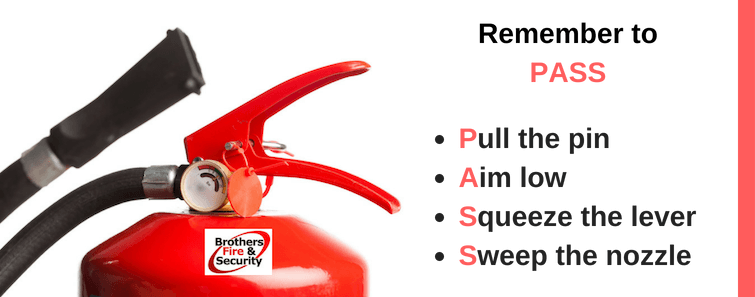Making the Switch: Vendor Transition Guide
Switching fire and security vendors feels risky. Even if your current provider isn't meeting your needs, the thought of transitioning systems and...
 |
Fire protection professionals committed to safeguarding lives, property, and peace of mind. |
 |
Solutions designed for your property type, from multi-family housing to healthcare facilities to retail spaces. |

|
Fire alarm, area of refuge, camera, and card access monitoring services. |
 |
Clear communication and instant response when every second counts. |
 |
From kitchens to server rooms, the right protection for every space. |
 |
Keep your primary defense system ready and reliable. |

|
Manage all your properties' access from one simple platform. |
 |
Monitor multiple properties in real time from anywhere, at any time. |

|
Document upcoming maintenance appointments and improve your proactive budget planning. |
 |
Fire Extinguisher Maintenance Checklist Learn the requirements for testing extinguishers monthly, annually, and beyond. |

|
Track all your inspection deadlines in one place. |
 |
Kitchen Hood Inspection Checklist Ensure your kitchen hoods are safe and compliant. Download a complete list of testing requirements. |

|
Guide to Fire & Security Monitoring Your complete property protection handbook in practical terms. |

|
Running a food truck takes work—this guide gives you the tools to keep it safe and up to code. |
 |
Comprehensive Guide to NFPA 13 and NFPA 25 Fire Sprinkler Systems Navigate sprinkler system requirements with confidence using our straightforward guide to codes and maintenance. |

|
Get your essential compliance guide. |
 |
When reliability matters across 18 restaurants, micromanagement doesn't. |
3 min read
Stephen Cieslukowski, President : February 21, 2023

Fire extinguishers can effectively put out 80 percent of all fires, even if the extinguisher is classified as a portable unit. In fact, the fire department is not required to attend fires in 75 percent of cases. Almost 2 million fires are handled entirely by a fire extinguisher in the U.S. every year thanks to what appears to be a simple—and sometimes overlooked—safety “accessory."
Don’t be mistaken. Fire extinguishers are powerful tools surrounded by myths and misinformation. For this reason, we’ve put together a simple “Fire Extinguisher 101” to share the truth on this topic and, ultimately, save lives and property.
All commercial buildings have safety code requirements, which includes the maintenance of fire extinguishers. When it comes to commercial extinguishers presence and placement, property owners and management must consider the following:
The rule of thumb for home use and placement of fire extinguishers is to situate them close enough to avoid ever having to walk through a fire to retrieve one. If fire extinguishers are too difficult to get to from any floor or area of the house, they’ll be rendered useless in an actual emergency. The National Fire Protection Association recommends that there be at least one working fire extinguisher for every 600 square feet of living area. Any source of heat or flame should have an extinguisher no farther than 25 feet away at all times wherever there could be a potential fire:
To maintain an operational fire extinguisher, inspect it once a year, recharge it every six years, and rebuild or replace it every 12 years. Family fire drills should include how to use fire extinguishers.
Now that you’ve passed “Fire Extinguishers 101,” let’s move on to “Fire Extinguishers 201.”
Let’s take a look at the three most common types of fire extinguishers:
To operate a fire extinguisher, remember to PASS:

The first fire extinguisher was patented in England in 1723 by Ambrose Godfrey, a celebrated chemist at the time. It consisted of a cask of fire-extinguishing liquid containing a pewter chamber of gunpowder. This was connected with a system of fuses which were ignited, exploding the gunpowder and scattering the solution. The modern fire extinguisher was invented by British Captain George William Manby in 1818. It consisted of a copper vessel of three gallons (13.6 liters) of pearl ash (potassium carbonate) solution contained within compressed air.
And there you have it. It’s obvious fire extinguishers are a must-have in your business and home. When choosing a fire extinguisher, don’t base your decision on a cheap and often single use unit. Instead, Brothers Fire & Security recommends the Pyrochem and Ansul brands for the best quality and performance in an emergency.
We offer training to our commercial clients in how to use fire extinguishers, so give us a call and we’ll set up training.
Brothers Fire & Security encourages homeowners to thoroughly research extinguishers and discuss the options with your local fire department. They are very willing to help you in those decisions.
As one of the premier providers of fire and security solutions in the Upper Midwest, Brothers Fire & Security strives to build long-term, value-added relationships. We work with business owners and property management companies, as well as all types of public institutions to solve fire and security needs. By taking advantage of our integrated bundled services, many of our clients save 25-30 percent on their safety services, annual inspections, and more. We provide fire protection systems, security systems, fire sprinkler systems, fire alarm systems, 24-7 monitoring, fire extinguishers, card access, and kitchen hoods.

Switching fire and security vendors feels risky. Even if your current provider isn't meeting your needs, the thought of transitioning systems and...

Your fire alarm shows a trouble signal. Last week's sprinkler inspection never happened, and despite three calls and multiple messages, your vendor...

Winter weather and holiday demands can make managing multi-location security a nightmare. Fall is your best window to upgrade security systems,...